|
Books Should Be Free Loyal Books Free Public Domain Audiobooks & eBook Downloads |
|
|
Books Should Be Free Loyal Books Free Public Domain Audiobooks & eBook Downloads |
|
Historical Fiction |
|---|
|
Book type:
Sort by:
View by:
|
By: Harriet Beecher Stowe (1811-1896) | |
|---|---|
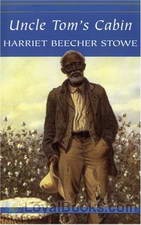 Uncle Tom's Cabin
Uncle Tom's Cabin
Uncle Tom’s Cabin is one of the most controversial novels of the last century, with it’s sentimental portrayal of the anti-slavery movement in the USA. Written in 1852, the novel instantly rose to fame and split Americans up and down the country. Stowe was a passionate abolitionist and was inspired to write Uncle Tom when she spent time in Cincinnati in the early part of the 18th century. She met many slaves who had escaped from Kentucky and was touched by the friendships she built. It was with this sentiment that the novel was born and the deep empathy Stowe had for slaves is evident throughout... | |
 The Pearl of Orr's Island
The Pearl of Orr's Island
Go on a journey to the coast of Maine and immerse yourself in the picturesque community on Orr’s Island. See the raindrops glistening on the pine needles and hear the waves crashing on the rocks. This is a tale of romance, tragedy, crusty sea captains, an impetuous boy, a loving girl, complete with village gossips and twists in the plot. | |
 Oldtown Folks
Oldtown Folks
1870's rural Massachusetts communities became famous as “Oldtown” in Harriet Beecher Stowe's 7th novel and national bestseller. Based partially on her husband Rev. Calvin Stowe's childhood memories and other old timers' recollections, this story of growing up in rural New England just after the American Revolution is one of the earliest examples of local color writing in New England. Young Horace Holyoke, the novel's narrator, describes life during the early Federalist years, capturing its many rich ideas, customs, and family lore... | |
 Chimney Corner
Chimney Corner
Stowe wrote over 30 books. This one is a fascinating collection of her post Civil War musings on a variety of cultural topics, staged mostly as conversations between Christopher Crowfield , and his wife, their son Ben, daughter Jenny, their friends, and various neighbors who drop in to chat around the fireside. Lively topics include women's suffrage & their education, entertainment, fashion, the economy during reconstruction, youth entertainment, and how society and its institutions should prepare young women for useful, meaningful lives besides getting married or simply depending on other family members to support them while they do little or nothing, or worse, fall into a street life... | |
By: Harrison Ainsworth | |
|---|---|
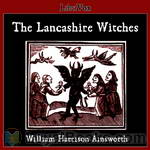 The Lancashire Witches
The Lancashire Witches
The Lancashire Witches is a highly fictionalised account of the activities of the notorious witches Demdike, Chattox and Alice Nutter who, together with others terrorised the district of Lancashire around Pendle Hill and the Forest of Bowland during the early seventeenth century. The witches named in the book were real enough, if not as witches then as people. Ainsworth, in his story brings in the dissolution of Whalley Abbey and the historic families of Assheton, Braddyll and Nowell and takes us through to the final trial and execution at Lancaster Castle in 1612. (Summary by Andy Minter) | |
By: Henry Blake Fuller (1857-1929) | |
|---|---|
 Cliff-Dwellers
Cliff-Dwellers
Between the former site of old Fort Dearborn and the present site of our newest Board of Trade there lies a restricted yet tumultuous territory through which, during the course of the last fifty years, the rushing streams of commerce have worn many a deep and rugged chasm. These great canons—conduits, in fact, for the leaping volume of an ever-increasing prosperity—cross each other with a sort of systematic rectangularity, and in deference to the practical directness of local requirements they are in general called simply—streets... | |
By: Henry Cadwallader Adams (1817-1899) | |
|---|---|
 Perils in the Transvaal and Zululand
Perils in the Transvaal and Zululand
A young man travels to South Africa to find his Mother and sister. He wants to be a clergyman and a farmer when he arrives there. This story includes accounts of the Zulu-Boer wars. - Summary by Ingrid Kennedy | |
By: Henry Fielding (1707-1754) | |
|---|---|
 The History of Tom Jones, A Foundling
The History of Tom Jones, A Foundling
Tom Jones is considered one of the first prose works describable as a novel. The novel is divided into 18 smaller books. Tom Jones is a foundling discovered on the property of a very kind, wealthy landowner, Squire Allworthy. Tom grows into a vigorous and lusty, yet honest and kind-hearted, youth. He develops affection for his neighbor’s daughter, Sophia Western. On one hand, their love reflects the romantic comedy genre popular in 18th-century Britain. However, Tom’s status as a bastard causes Sophia’s father and Allworthy to oppose their love; this criticism of class friction in society acted as a biting social commentary... | |
 The History of the Life of the Late Mr. Jonathan Wild the Great
The History of the Life of the Late Mr. Jonathan Wild the Great
This novel is sometimes thought of as [Fielding's] first because he almost certainly began composing it before he wrote Shamela and Joseph Andrews. It is a satire of Walpole that draws a parallel between Walpole and Jonathan Wild, the infamous gang leader and highwayman. He implicitly compares the Whig party in Parliament with a gang of thieves being run by Walpole, whose constant desire to be a “Great Man” (a common epithet for Walpole) should culminate only in the antithesis of greatness: being hanged. | |
By: Henry Handel Richardson (1870-1946) | |
|---|---|
 Australia Felix
Australia Felix
The story of Richard Mahony, a doctor trained in Edinburgh who comes to Ballarat in the gold rush of the 1850s. At first he runs a shop but later he marries and returns to medical practice. His story is interwoven with that of his wife’s brothers and sister. Even after his medical practice becomes successful he is still unhappy living in the colony and decides to return home to Britain. Richard is a restless irritable man whose character is said to be based on the author’s own father. This book is the first of the trilogy ‘The Fortunes of Richard Mahony’, but stands well on its own... | |
By: Henry Lawson (1867-1922) | |
|---|---|
 Short Stories in Prose and Verse
Short Stories in Prose and Verse
Short Stories in Prose and Verse” is Henry Lawson’s first published book ; his first published poem appeared in 1887. The volume is a snapshot of his writing style up to the start of his career. His first published poem appeared at age 20, his first published book at age 27. This volume is a good sample of Henry Lawson’s poetry and prose and makes a good stepping-stone towards the enjoyment of his later works. Summary by Chris Greaves | |
By: Henry Peterson (1818-1891) | |
|---|---|
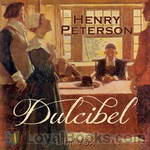 Dulcibel A Tale of Old Salem
Dulcibel A Tale of Old Salem
Dulcibel is a young, pretty and kind-hearted fictional character charged with Witchcraft during the infamous Salem Witch trials. During this time there is a group of "afflicted girls" who accuse Dulcibel and many others of Witchcraft, and during their trials show "undoubtable" proof that these people really are Witches. Will Master Raymond, Dulcibel's lover, be able to to secure Dulcibel's release from jail? Or will Dulcibel's fate be the gallows like so many other accused Witches of her time? | |
By: Henry Rider Haggard (1856-1925) | |
|---|---|
 Pearl Maiden
Pearl Maiden
This is the story of Miriam, an orphan Christian woman living in Rome in the first century. She falls in love with a Roman officer, but knows that her Jewish childhood playmate loves her too and will do anything in order to get her love in return. | |
By: Henryk Sienkiewicz (1846-1916) | |
|---|---|
 Quo Vadis
Quo Vadis
Sienkiewicz’s epic novel of ancient Rome finds the Empire at the height of her power and splendor, but struggling with the madness and cruelty of the Emperor Nero. A new religion is sweeping across the world, causing many Romans to wonder and leading many others to sacrifice everything for it. Yet, even as a great city burns and darkness threatens to overwhelm the age, hope is found in the love of the Roman tribune Marcus Vinicius for the beautiful Christian maiden Lygia, and in his journey toward his life’s true purpose (Introduction by D. Leeson). | |
 With Fire and Sword
With Fire and Sword
In 1647, Poland is a land facing complete destruction with fire and sword. It may come from without, as the Tartar hordes swarm over the steppes, turning cities to ash and the Poles to slaves. It may come from within the country’s bounds, as the traitor Hmyelnitski leads the Cossacks in a devastating revolt. Or it may come simply because the nation’s leaders and nobility have become selfish, lazy, and complacent, and are ill-equipped to face the horrors coming their way. If Poland is to survive, it will depend on the heroes who rise in her time of need... | |
By: Herman Melville (1819-1891) | |
|---|---|
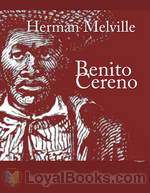 Benito Cereno
Benito Cereno
On an island off the coast of Chile, Captain Amaso Delano, sailing an American sealer, sees the San Dominick, a Spanish slave ship, in obvious distress. Capt. Delano boards the San Dominick, providing needed supplies, and tries to learn from her aloof and disturbed captain, Benito Cereno, the story of how this ship came to be where she is. Dealing with racism, the slave trade, madness, the tension between representation and reality, and featuring at least one unreliable narrator, Melville's novella has both captivated and frustrated critics for decades. | |
By: Homer Greene (1853-1940) | |
|---|---|
 Blind Brother (Version 2 Dramatic Reading)
Blind Brother (Version 2 Dramatic Reading)
A story of repentance and forgiveness set in the times of the the coal mines. Follow a blind boy and his brother determined to get him cured but also determined to live up to a moral code even if that mean years of blindness for Benny. See self sacrifice and family togetherness in this classic tale. - Summary by Luke Castle Cast List Narrator: Sky AsimaruDoctor: lordaJack: Andrew JamesBennie, Judge: larryhayes7Lawyer Pleadwell: Adam BielkaTom: NavinSandy: RockyOctopusDistrict Attorney, Lawyer Summons: Alan MapstoneRandom Testifying Guy, Sheriff: Michael LMicheal Carolann, Irishman: Wayne CookeCourt Clerk, Little Fellow: ambsweet13Mother: LilyLewis G... | |
By: Honoré de Balzac (1799-1850) | |
|---|---|
 Father Goriot
Father Goriot
One of Balzac's most popular works, set around 1815 during the re-ascendancy of the Bourbon kings following the defeat of Napoleon. Said to have been an inspiration to Charles Dickens and Henry James as well as others, the novel seeks to portray the realism of scenes and people. It is also a commentary upon the changing social strata and mores of the day. | |
 Catherine De' Medici
Catherine De' Medici
The Philosophical Studies from The Human Comedy are a series of works that are intended as a reflection on history in part through the use of fiction. 'Catherine de Medici' is one such 'study', and features, alongside detailed history sections, elements of the 'story' are fictionalised. In particular, this happens through dialogue that describes the feelings of the characters and what they are doing, these parts in the manner of a novel. In particular, Catherine de Medici , was depicted by historians as a bad ruler... | |
 Chouans (version 2)
Chouans (version 2)
“The Chouans” was the first novel published under Balzac’s own name . It became the first book in the great work of his lifetime — the novel series titled “The Human Comedy.” Balzac was impressed by the writings of Sir Walter Scott. Scott made Scottish history come alive by creating fictions that used real history as backdrop. Balzac’s novel is set in 1799 — the year that Napoleon became First Consul of France. In the far west of France , anti-revolutionary sentiment still simmered... | |
By: Horatio Alger, Jr. (1832-1899) | |
|---|---|
 Mark the Match Boy or Richard Hunter's Ward
Mark the Match Boy or Richard Hunter's Ward
In this third installment from the “Ragged Dick” series by Horatio Algers, Jr., the reader is reacquainted with some old friends and meets young Mark Manton. Mark is a match boy plagued by bad luck and an even worse guardian. But, with new friends, hard work, and smart choices, Mark may just find his luck taking a turn for the better. summary by tfaulder | |
 Rough and Ready OR Life Among the New York Newsboys
Rough and Ready OR Life Among the New York Newsboys
Join Rough and Ready for his adventure on the streets of New York City. Working as a newsboy, Rough and Ready tries to support himself and his sister on his meager earnings. Unfortunately, their stepfather is seeking to kidnap little Rose, getting an education is hard work, swindlers are trying to trick him out of his money, and thieves are planning nefarious deeds. Luckily for Rough and Ready, he makes some good friends along the way. Summary by Tori Faulder | |
By: Howard Pyle (1853-1911) | |
|---|---|
 The Merry Adventures of Robin Hood
The Merry Adventures of Robin Hood
A modern day legend, Robin Hood is an archetypal hero of the common people who goes to great lengths to famously take from the rich and give to the poor. Luckily he is not alone in his mission, as his righteous views are shared by his band of Merry Men, a group of yeomen, and together they pursue an end to injustice and oppression. Set in medieval England, the tale begins with the introduction of a young archer, who is provoked into conflict and committing a crime against the formidable Sherriff of Nottingham and is immediately dubbed an outlaw... | |
 Men of Iron
Men of Iron
Men of Iron by Howard Pyle is historical fiction that transports us back to the 1400’s, a time of knighthood and chivalry. Myles Falworth is eight years old when news comes they must flee their home. His blind father is accused of treason. We see Myles grow up, train as a knight, and with perseverance, clear his father of any wrong-doing and restore their family name. | |
 Otto of the Silver Hand
Otto of the Silver Hand
The story of little Otto, a gentle, peace-loving child born into the heart of turmoil and strife in the castle of a feuding robber baron in medieval Germany. (Summary by Arctura) | |
 Howard Pyle's Book of Pirates
Howard Pyle's Book of Pirates
Swashbuckling tales of legendary pirates, buccaneers, and marooners, terrors of the Spanish Main. | |
By: Hugh Walpole (1884-1941) | |
|---|---|
 Cathedral
Cathedral
Sir Hugh Seymour Walpole, CBE (1884 – 1941) was an English novelist. He was the son of an Anglican clergyman, intended for a career in the church but drawn instead to writing. Among those who encouraged him were the authors Henry James and Arnold Bennett. His skill at scene-setting, vivid plots, and high profile as a lecturer brought him a large readership in the United Kingdom and North America. He was a best-selling author in the 1920s and 1930s, but has been largely neglected since his death... | |
 Gods and Mr Perrin
Gods and Mr Perrin
The book is probably better known under the title ‘Mr Perrin and Mr Traill’, later made into a well-known film in 1948. Perrin and Traill are masters at a grim old-fashioned second-rate boarding public school in Cornwall – Perrin has been there many years and the youthful Traill has just arrived. The book concerns the growing antagonism between the two which turns into active dislike following an unfortunate incident and which eventually has devastating consequences. The author vividly captures the dreadful nature of such a cloistered society and the stultifying effect it has on the pupils, their teachers and the other adults in the community. - Summary by Simon Evers | |
 Green Mirror
Green Mirror
Three generations of the Trenchard family, ruled over by the indomitable Mrs Trenchard, live together in comfortable domesticity until Katherine, the favourite daughter, meets and falls in love with Philip, back from some years in Russia, who threatens the whole stability of the family set up by thinking that he can marry her and thus take her away from them all. Philip and Katherine agree reluctantly to postpone their marriage for a full year. During this year, the family begins to splinter as more about Philip and his past becomes known. With considerable humour, the book follows the ups and downs of the family relationships as the year progresses. | |
By: Irving Bacheller (1859-1950) | |
|---|---|
 Eben Holden - A Tale of the North Country
Eben Holden - A Tale of the North Country
Eben Holden - A Tale of the North Country. Having lost both parents and his home in northern Vermont, orphan Willie Brower is taken in by Eben Holden, "Uncle Eb" who transports him westward to save him from being sent to an orphanage. Through the Adirondacks and into the St. Lawrence valley they travel. Eben is kind, happy, and loves to tell stories to the youngster, many of which were to shape the life and ideals of Willie during his life.This story follows Willie as a young orphan, later as a journalist, and finally as a soldier who enlists in the army at the outset of the American Civil War... | |
By: Isabella Varley Banks (1821-1897) | |
|---|---|
 Manchester Man
Manchester Man
Jabez Clegg, the Manchester man, floats into this historical novel in 1799, carried downstream by the River Irk in flood. Jabez's rise to commercial success mirrors the rise of the city at the heart of the industrial revolution. Mrs George Linnaeus Banks (nee Isabella Varley) weaves a web of historical fact and fiction in a fast-paced story built around the rivalry between the Jabez and his nemesis Laurence Aspinall, and the fate of Augusta Ashton, who is loved by both but loves only one. An entertaining fictional journey through the early 19th century history of the city of Manchester, the book also has serious points to make about women's choices and domestic violence. | |
By: Israel Zangwill (1864-1926) | |
|---|---|
 Children of the Ghetto
Children of the Ghetto
In this 1892 novel of London's Jewish East End, Israel Zangwill sets the apparently irrational and decidedly indecorous religious practices of transplanted eastern European Jews against the forces of assimilation. Zangwill's knowledge of Yiddishkeit and skill in melodrama created a series of unforgettable vignettes that had a significant effect on the public perception of this much stigmatized immigrant group. Israel Zangwill (1864-1926) was born in London of Russian and Polish parents. He coined the term cultural "melting pot". | |
By: Ivan S. Turgenev (1818-1883) | |
|---|---|
 On the Eve
On the Eve
On the Eve appeared in 1860, two years before Fathers and Sons, Turgenev's most famous novel. It is set in the prior decade (by the end of the novel, the Crimean War (1853-56) has already broken out. It centers on the young Elena Nikolaevna Stakhov, daughter of Nikolai Arteyemvitch and Anna Vassilyevna Stahov. Misunderstood by both her parents (Nikolai Artemyevitch is at least as interested in his German mistress as in members of her family) she is on friendly terms with both the would-be professor Andrei Petrovitch Bersenyev and the rising young sculptor Pavel Yakovitch Shubin, both of whom might be -- or might not be -- in love with her... | |
By: Ivan Turgenev (1818-1883) | |
|---|---|
 Virgin Soil Volume 1
Virgin Soil Volume 1
Turgenev's last and longest novel presents the story of a group of young people in late nineteenth century Russia, who because of disillusionment with the country's entrenched traditional hierarchies and power relationships, seek to foment revolutionary activity especially among the peasant and working classes, pursuing a Populist "cause". The novel throws together some disparate personalities, from aesthetes to aristocracy to works managers to fools, and exposes the real human emotions and tensions generated by the cause. The publication being read is divided into two volumes; this first one includes Chapters 1-20, approximately half the book. Volume 2 is catalogued separately. | |
 Virgin Soil Volume 2
Virgin Soil Volume 2
The second volume of Turgenev's last novel sees social change bubbling up into conflict with the established order and interacting with the fates of the characters, testing their resolve and motivations to the limit. The publication being read is divided into two volumes; the first one includes Chapters 1-20, approximately half the book, and is catalogued separately. This recording is Volume 2, including chapters 21-38. | |
By: J. M. Barrie (1860-1937) | |
|---|---|
 Echoes of the War
Echoes of the War
Short stories with dramatic parts about civilian life in London during the First World War. Some humorous moments. By the author of "Peter Pan". | |
By: J. Thomas Warren | |
|---|---|
 Northern Spy
Northern Spy
The Northern Spy, written in the 1800s, is a lively story about a Union soldier who infiltrates a Confederate battalion in order to aid in the conquering of South Carolina. The novel was very popular, so much so that allegedly Northern Spy apples were named for the hero of the story. - Summary by A. Gramour | |
By: J. Walker McSpadden (1874-1960) | |
|---|---|
 Robin Hood
Robin Hood
Robin Hood is a heroic outlaw in English folklore. A highly skilled archer and swordsman, he is known for "robbing from the rich and giving to the poor", assisted by a group of fellow outlaws known as his "Merry Men". Traditionally Robin Hood and his men are depicted wearing Lincoln green clothes. The origin of the legend is claimed by some to have stemmed from actual outlaws, or from ballads or tales of outlaws. | |
By: Jack London (1876-1916) | |
|---|---|
 When God Laughs, and Other Stories
When God Laughs, and Other Stories
This collection of Jack London's short stories touches on a variety of topics, from his love of boxing, to relationships between criminals, to the trials of life and travel on many frontiers, to an allegory about a king who desired a nose. London is considered a master of the short story, a form much more to his liking and personality than his novels. He was active and quick of mind and the short story suited him well. | |
By: Jacob Abbott (1803-1879) | |
|---|---|
 Margaret of Anjou
Margaret of Anjou
Margaret of Anjou, wife of England’s Henry VI, played a key role in launching the storied War of the Roses – the 30-year civil conflict fuelled by the Lancasters and the Yorks, each vying for the British throne in the 15th century. (Summary by Cathy Barratt.) | |
By: James Baikie | |
|---|---|
 Peeps at Many Lands: Ancient Egypt
Peeps at Many Lands: Ancient Egypt
Written primarily for children, James Baikie’s ‘peep’ at ancient Egypt is a really well done, historical account of the ways of that fascinating land so many years ago. It has stood well the test of time, being both well researched and well written. It’s a fun book for everyone, and families especially will enjoy listening together. | |
By: James Driscoll | |
|---|---|
 The Brighton Boys in the Radio Service
The Brighton Boys in the Radio Service
The Brighton Boys in the Radio Service is a boys adventure story set in WWI – Three College Chums join the military and face the perils of spies, submarines and enemy soldiers in the trenches of embattled Europe. An engaging story set in a period where good guys wore white hats, bad guys wore black hats and every chapter ends with a cliffhanger so you have to come back for more! | |
By: James Fenimore Cooper (1789-1851) | |
|---|---|
 The Last Of The Mohicans
The Last Of The Mohicans
The Last of the Mohicans is an epic novel by James Fenimore Cooper, first published in January 1826. It was one of the most popular English-language novels of its time, and helped establish Cooper as one of the first world-famous American writers.The story takes place in 1757 during the French and Indian War, when France and Great Britain battled for control of the American and Canadian colonies. During this war, the French often allied themselves with Native American tribes in order to gain an advantage over the British, with unpredictable and often tragic results. | |
 The Spy
The Spy
Between 1865-73 the tumultuous American Revolution rages on in different battlefields. The air is thick with hatred and suspicion as the Continental and British armies clash in bloody warfare. In Westchester County, New York, an area is considered a neutral ground for both forces, Harvey Birch plies his dangerous mission. An innocuous peddler by day, he is in fact an American spy, though he does nothing to correct anyone who assumes he is a British spy. In a magnificent country mansion, The Locusts, live the wealthy Whartons... | |
 The Pathfinder
The Pathfinder
Natty Bumppo goes by many names: La Longue Carabine, Hawk Eye, Leatherstocking, and in this tale, The Pathfinder. Guide, scout, hunter, and when put to it, soldier, he also fills a lot of roles in pre-Revolution upstate New York. An old friend, Sergeant Dunham of the 55th Regiment of Foot, asks him to guide his daughter through the wilderness to the fort at Oswego where Dunham serves. With the French engaging native Indian allies against the British and the Yankee colonists, such a journey is far from safe... | |
 The Pioneers
The Pioneers
The Pioneers: The Sources of the Susquehanna; a Descriptive Tale is one of the Leatherstocking Tales, a series of five novels by American writer James Fenimore Cooper. The Pioneers was first of these books to be published (1823), but the period of time covered by the book (principally 1793) makes it the fourth chronologically. (The others are The Deerslayer, The Last of the Mohicans, The Pathfinder, and The Prairie.)The story takes place on the rapidly advancing frontier of New York State and features... | |
 Prairie - A Tale
Prairie - A Tale
The story opens with Ishmael, his family, Ellen and Abiram slowly making their way across the virgin prairies of the Midwest looking for a homestead, just two years after the Louisiana Purchase, and during the time of the Lewis and Clark Expedition. They meet the trapper (Natty Bumppo), who has left his home in New York state to find a place where he cannot hear the sound of people cutting down the forests. In the years between his other adventures and this novel, he tells us only that he has walked all the way to the Pacific Ocean and seen all the land between the coasts (a heroic feat, considering Lewis and Clark hadn’t yet completed the same trek). | |
 Heidenmauer; or, The Benedictines. A Legend of the Rhine
Heidenmauer; or, The Benedictines. A Legend of the Rhine
This is a story that is set in 16th century Germany. Characters representing the various classes of the remnants of feudalism and the rising bourgeois class struggle against each other. Placed in the light of the very recent and polarizing Protestant Reformation, the characters' tensions increase. - Summary by Joel Kindrick | |
By: James Oliver Curwood | |
|---|---|
 The Alaskan
The Alaskan
This story opens with a young woman who voyages alone into the wilds of Alaska to escape her tragic past. It then continues on to a young man who passionately protects the pristine environment, people and way of life in this snowbound country. Finally, a greedy profiteer arrives in the narrative whose only aim is to fill his pockets. When these three characters encounter each other on the stark and snowy plains, it's a clash of ideals and the sparks begin to fly. The Alaskan by James Oliver Curwood is one of his very engaging adventure romance conservationist stories and was an instant bestseller, like most of his books, when it was first published in 1923... | |
 God's Country—And the Woman
God's Country—And the Woman
James Curwood wrote many adventures of the far north. By 1909 he had saved enough money to travel to the Canadian northwest, a trip that provided the inspiration for his wilderness adventure stories. The success of his novels afforded him the opportunity to return to the Yukon and Alaska for several months each year that allowed him to write more than thirty such books. The Canadian North is often referred to as “God’s Country” God’s Country is a tale of adventure, mystery and romance! | |
By: James Otis (1848-1912) | |
|---|---|
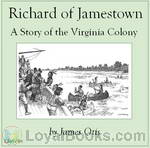 Richard of Jamestown: A Story of the Virginia Colony
Richard of Jamestown: A Story of the Virginia Colony
Richard of Jamestown by James Otis was written for children with the purpose to show them the daily home life of the Virginia colonists. It is written from the viewpoint of a young boy named Richard Mutton. | |
 Ruth of Boston: A Story of the Massachusetts Bay Colony
Ruth of Boston: A Story of the Massachusetts Bay Colony
James Otis wrote a series of books depicting life in the new colonies, written from a child’s point of view. Ruth of Boston is the story of 12 year old Ruth, coming from London to live in the Massachusetts Bay Colony. It gives accounts of what a girl’s daily life might have been like during the beginnings of this colony. | |
By: Jane Porter (1776-1850) | |
|---|---|
 The Scottish Chiefs
The Scottish Chiefs
An adventure novel about William Wallace, one of the most popular books ever written by Jane Porter. The French version was even banned by Napoleon, and the book has remained very popular with Scottish children, but is equally enjoyable for adults. | |
By: John A. Joyce | |
|---|---|
 Shakspere: Personal Recollections
Shakspere: Personal Recollections
Recording of Shakspere: Personal Recollections, by John A. Joyce.A fictitious account of a "friend" of William Shakespeare, who accompanies him from his birth to his death and beyond, chronicling Shakespeare's life, adventures, speeches, and impromptu bursts of poetry. | |
By: John Ackworth (1854-1917) | |
|---|---|
 Doxie Dent
Doxie Dent
Following the short story collections, Clog Shop Chronicles and Beckside Lights, John Ackworth completed the adventures of clogger Jabez Clegg and his Beckside cronies with a novel. Jabez's niece, the young and vivacious Doxie Dent, has grown up in 'Lunnon'. Arriving in the Lancashire village that is cloggers home, she delights the villagers with her southern ways, but Jabez remains unimpressed... | |
By: John Dos Passos (1896-1970) | |
|---|---|
 Three Soldiers
Three Soldiers
Three Soldiers, the second novel by John Dos Passos, follows the experiences of several young Americans thrown into the confusion and brutality of World War I.Written when the author was just twenty-three, it was key to the development of a realistic depiction of war in American literature, and earned Dos Passos, later named by Jean-Paul Sartre "the greatest living writer of our time", important early attention.Critic H L Menken said of it: "no war story can be written in the United States without challenging comparison with it--and no story that is less meticulously true will stand up to it... | |
By: John Galsworthy (1867-1933) | |
|---|---|
 The Man of Property
The Man of Property
The first book in Galsworthy’s trilogy, The Forsyte Saga, The Man of Property revolves around the lives of the Forsytes, a self-conceited and cold family, who place a high value on propagating money and rising from their yeoman roots. The novel chronicles the events that lead to their inevitable demise, which is instigated by the stuffy man of property, Soames Forsyte, as he pursues the ideals of the preceding generation, whilst maintaining his own obsession with ownership. At the same time, Galsworthy candidly criticizes the values of the upper-middle classes, by means of satire, irony, a mixed array of realistic characters, an evocative setting, and an intricate plot... | |
 Beyond
Beyond
Gyp, the daughter of ex-Major Charles Claire Winton, at the age of 23 marries Fiorsen, a Swedish violin virtuoso. Her mother, the wife of another man, has been Winton's mistress; she had died when Gyp was born. A highly sensitive child, Gyp has grown up in isolated surroundings with a kind, but very British, father. As she gets older her father tries to introduce her into society. An attack of gout takes him to Wiesbaden for a cure and, as he never goes anywhere without her, she accompanies him... | |
By: John Kendrick Bangs (1862-1922) | |
|---|---|
 Peeps at People - Being Certain Papers from the Writings of Anne Warrington Witherup
Peeps at People - Being Certain Papers from the Writings of Anne Warrington Witherup
Written by a fictitious first-person narrator, this book puts a humorous spin on encounters with several famous people of the time. "I set forth from my office in London upon my pilgrimage to the shrines of the world's illustrious. Readers everywhere are interested in the home life of men who have made themselves factors in art, science, letters, and history, and to these people I was commissioned to go." -- Summary by TriciaG and from the book. | |
By: John R. Musick (1849-1901) | |
|---|---|
 The Witch of Salem
The Witch of Salem
A Historical Novel about the Salem Witch Trials. A fantastic illustrated historical novel by the prolific American author John R. Musick From the author’s preface: The "Witch of Salem" is designed to cover twenty years in the history of the United States, or from the year 1680 to 1700, including all the principal features of this period. Charles Stevens of Salem, with Cora Waters, the daughter of an indented slave, whose father was captured at the time of the overthrow of the Duke of Monmouth, are the principal characters... | |
By: Joseph A. Altsheler (1862-1919) | |
|---|---|
 Last Rebel
Last Rebel
Arthur West has been taken as a prisoner of war by Colonel Hetherhill of the Confederate States of America, and imprisoned at Fort Defiance, where an oddly small number of soldiers are stationed. More odd than the size of the fort's company, however, is the fact that the Civil War ended thirty years prior to West's capture. This is the story of West's attempts to regain his freedom. - Summary by David Gore | |
By: Joseph Alexander Altsheler (1862-1919) | |
|---|---|
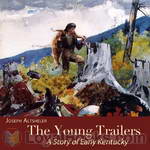 The Young Trailers: A Story of Early Kentucky
The Young Trailers: A Story of Early Kentucky
This is the story of Henry Ware, a young boy living in the wilds of the Kentucky frontier of the 1700's. The story follows Henry as he helps to establish a frontier outpost, is captured by an Indian tribe, and ultimately ensures the safety and security of a band of settlers against the warring Shawnee Indians. The Young Trailers is action packed and brings to life the adventures that awaited the early settlers as they traversed into the endless forests of the American frontier. | |
 The Guns of Shiloh
The Guns of Shiloh
The Northern Army has just be handed a great defeat at Bull Run and is headed back to Washington, DC. How will the North answer this defeat? Follow our hero, Dick Mason, into the Western campaign to find out.This is the second book in the Civil War Series by Joseph A. Altsheler. | |
 The Star of Gettysburg
The Star of Gettysburg
The Army of Northern Virginia, still victorious after three hard years of fighting, capitalize on their victories at Fredericksburg and Chancellorsville, and a young Harry Kenton, is an eyewitness to the Confederate invasion of the north, culminating in the epic three-day struggle at Gettysburg, Pennsylvania, where Robert E. Lee puts into place a strategy that will end the war, or shatter his army. (Introduction by Robert Fletcher) | |
 Guns of Bull Run
Guns of Bull Run
The first volume in the Civil War series, following the adventures of Harry Kenton, who leaves his home in Kentucky. He travels through dangerous territory to South Carolina on a secret mission on the eve of the Civil War. (From Chapter 4) "They will not fire! They dare not!" cried Shepard in a tense, strained whisper. As the last word left his lips there was a heavy crash. A tongue of fire leaped from one of the batteries, followed by a gush of smoke, and a round shot whistled over the Star of the West... | |
 Sword of Antietam
Sword of Antietam
"The Sword of Antietam" tells a complete story, but it is one in the chain of Civil War romances, begun in "The Guns of Bull Run" and continued through "The Guns of Shiloh" and "The Scouts of Stonewall." The young Northern hero, Dick Mason, and his friends are in the forefront of the tale. | |
 Scouts of Stonewall
Scouts of Stonewall
In this third book of Joseph Altsheler's Civil War series, Harry Kenton, a lieutenant in the Southern Army, is on scout patrol in the Shenandoah Valley. He has attracted the notice of the great General Stonewall Jackson after his regiment, the Invincibles of South Carolina, suffered great losses at the Battle of Bull Run. As the war continues, Harry meets each challenge that he faces with his close friends and fellow warriors. | |
 Shades of the Wilderness
Shades of the Wilderness
"The Shades of the Wilderness" is the seventh book of the Civil War Series by Joseph A. Altsheler. Picking up where "The Star of Gettysburg" left off, this story continues the Civil War experiences of Harry Kenton and his friends in the Southern army, from the retreat after Gettygurg, to Richmond, and then through the battles of the Wilderness and Spottsylvania, to Robert E. Lee's heroic stand during the siege of Petersburg. Other books in the Civil War series are: "The Guns of Bull Run," "The Guns of Shiloh," "The Scouts of Stonewall," "The Sword of Antietam", "The Star of Gettysburg","The Rock of Chickamauga", and "The Tree of Appomattox." | |
By: Joseph Conrad | |
|---|---|
 The Point of Honor
The Point of Honor
Set during the Napoleonic Wars, “The Point of Honor” (English title: “The Duel”) features two French Hussar officers, D’Hubert and Feraud. Their quarrel over an initially minor incident turns into a bitter, long-drawn out struggle over the following fifteen years, interwoven with the larger conflict that provides its backdrop. At the beginning, Feraud is the one who jealously guards his honor and repeatedly demands satisfaction anew when a duelling encounter ends inconclusively; he aggressively pursues every opportunity to locate and duel his foe... | |
 Under Western Eyes
Under Western Eyes
Under Western Eyes (1911) is a novel by Joseph Conrad. The novel takes place in St. Petersburg, Russia, and Geneva, Switzerland, and is viewed as Conrad's response to the themes explored in Crime and Punishment, Conrad being reputed to have detested Dostoevsky. It is also, some say, Conrad's response to his own early life; his father was a famous revolutionary imprisoned by the Russians, but, instead of following in his father's footsteps, at the age of sixteen Conrad left his native land forever... | |
By: Jules Verne (1828-1905) | |
|---|---|
 The Fur Country
The Fur Country
The Hudson's Bay Company is one of the earliest corporations in the world and the oldest commercial organization in North America. It began as a fur trading company in 1670 and today owns a variety of retail corporations selling a diverse range of goods. In The Fur Country by Jules Verne, the plot describes how a team of Hudson's Bay Company members travel through the Northwest Territory of Canada with the aim of establishing a mission on the Arctic Circle. The members are a mixed bunch. One of the ladies, Paulina Barnett, seeks adventure, while a meteorologist Thomas Black hopes to view a spectacular solar eclipse scheduled to occur during their travel... | |
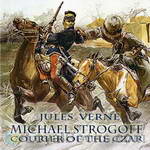 Michael Strogoff
Michael Strogoff
This is the account of the perilous mission of Michael Strogoff, courier for Czar Alexander II, who is sent from Moscow to the besieged city of Irkutsk, where the governor, brother of the Czar, has taken his last stand against a Tartar rebellion led by the fearsome Feofar-Khan. When telegraph lines are cut between the Russian Far East and the mainland, Strogoff must make his way through hostile territory to warn the governor of the return of the traitor Ivan Ogareff, a disgraced former officer who seeks vengeance against the Tsar’s family by the destruction of Irkutsk. | |
 The Blockade Runners
The Blockade Runners
Writing at the end of the American Civil War, Verne weaves this story of a Scottish merchant who, in desperation at the interruption of the flow of Southern cotton due to the Union blockade, determines to build his own fast ship and run guns to the Confederates in exchange for the cotton piling up unsold on their wharves. His simple plan becomes complicated by two passengers who board his new ship under false pretenses in order to carry out a rescue mission, one which Capt. Playfair adopts as his own cause. This is going make the Rebels in Charleston rather unhappy with him.Sure, his new ship is fast - but can it escape the cannonballs of both North and South? | |
By: Julian Corbett (1854-1922) | |
|---|---|
 For God And Gold
For God And Gold
Sir Julian Stafford Corbett was a prominent navy historian and geologist. This semi-autobiographical novel tells about the start: the personal and professional life of a scholar, the excitement of sailing, and joining the navy. - Summary by Stav Nisser. | |
By: Katharine S. Prichard (1883-1969) | |
|---|---|
 The Pioneers
The Pioneers
The Pioneers is set against the background of pioneering life in the Gippsland region of Victoria in pre-Federation Australia. Mary and Donald Cameron are free-settlers who make a home in the wilderness and grow a prosperous cattle operation that establishes their position as prominent members of the new settlement.At first, the novel privileges Mary’s perspective as she encounters escaped convicts, bush fires, and raising a son in a remote community. Later, it follows her son, Davey, as he struggles for independence against his father’s harsh authority... | |
By: Katherine Thurston (1875-1911) | |
|---|---|
 The Masquerader
The Masquerader
The Masquerader is one of two Katherine Cecil Thurston’s books that appeared on the Publisher’s Weekly best-sellers list in 1905. The Masquerader is part mystery, part romance and part political thriller – all tied up in one neat package. Nature has a way of sometimes making two people nearly indistinguishable in appearance. Such is the premise for this book. John Chilcote, a British politician, and John Loder, a man down on his luck meet by accident one night during one of London’s worst fogs... | |
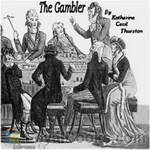 The Gambler
The Gambler
Clodagh, 18 years old, is the eldest daughter of Dennis Asshlin, an Irish gentleman who lives in an area of Ireland called Orristown. Dennis is passionate, proud and indebted to no one. But, Dennis has an obsession with gambling that is leading the family to ruin. When tragedy strikes, Clodagh finds herself in a situation where she must defend the family honor because “no Asshlin is ever obliged to anyone”. She marries a man she does not love who is many times her age and is thrust from adolescence to adulthood literally overnight... | |
By: Leo Tolstoy (1828-1910) | |
|---|---|
 War and Peace
War and Peace
Leo Tolstoy's War and Peace chronicles the lives of five Russian aristocratic families during Napoleon's invasion of Russia. Many considered this book to be the best Russian work of literature of all time and it is massive in scale. The book is divided in four volumes and the chapters don't just contain the narrative of the plot to the novel but philosophical discussions as well. This may be intimidating to average book readers but they shouldn't be discouraged to try reading War and Peace. After all, this book was written for all and not just for intellectuals... | |
 Master and Man
Master and Man
A land owner, Vasili Andreevich, takes along one of his peasants, Nikita, for a short journey to another town. He wishes to get to the town quickly ‘for business’. They find themselves in the middle of a blizzard, but the master in his avarice wishes to press on. They eventually get lost off the road and they try to camp. The master’s peasant soon finds himself about to die from hypothermia. The master leaves him on the horse to stubbornly try to find the road. When he returns, he attains a spiritual/moral revelation, and Tolstoy once again repeats one of his famous themes: that the only true happiness in life is found by living for others. (Wikipedia) | |
 War and Peace Vol. 1 (Dole Translation)
War and Peace Vol. 1 (Dole Translation)
”War and Peace” is a panoramic novel: It is its own justification, and perhaps needs no introduction. It always reminds the translator of a broad and mighty river flowing onward with all the majesty of Fate. On its surface, float swiftly by logs and stumps, cakes of ice, perhaps drowned cattle or men from regions far above. These floating straws, insignificant in themselves, tell the current. Once embark upon it, and it is impossible to escape the onward force that moves you so relentlessly. What landscapes you pass through, what populous towns, what gruesome defiles, what rapids, what cataracts! The water may be turbid, or it may flow translucent and pure, – but still it rushes on... | |
 War and Peace Vol. 2 (Dole Translation)
War and Peace Vol. 2 (Dole Translation)
I am inclined to rank Count Tolstoy not among the realists or naturalists, but rather as an impressionist. He is often careless about accuracy. Numberless incongruities can be pointed out. He is as willing to adopt an anachronism as a medieval painter. I would defy an historian to reconstruct the battle of Austerlitz from Count Tolstoy's description. And yet what a picture of a battle was ever more vivid! It is like a painting where the general impression is true, but a close analysis discovers... | |
By: Leonard Woolf (1880-1969) | |
|---|---|
 Village in the Jungle
Village in the Jungle
Woolf wrote this novel based on his experience as a government agent for British imperialist-controlled Ceylon in the early part of the twentieth-century. He focuses his story on one poor family in a jungle village as they struggle to survive, not just faced with a very harsh environment but with their own human prejudices, superstitions, jealousies, violence, ignorance, and greed. In the background is the other enemy: the foreign government that controls them but does not really understand or care for these uncivilized, not really human beings. It was an important work because its point of view was sympathetically a native one. JL | |
By: Louis Ulbach (1822-1889) | |
|---|---|
 The Steel Hammer
The Steel Hammer
A large inheritance greatly transforms the lives of three people: a good man, who would have inherited at least a part of the fortune if his uncle hadn't passed away before he could alter the will, his cousin, who inherits all but is prevented from enjoying it, and a gambler, who is in desperate need of such a sum of money. The connection of the three ends fatal for at least one of them. | |
By: Louisa May Alcott | |
|---|---|
 Shoes and Stockings: A Collection of Short Stories
Shoes and Stockings: A Collection of Short Stories
Here are tales of love and war, modesty and frivolity, laughter and tears. Louisa May Alcott wrote many, many short stories. This collection shares but 7 of them. | |
By: Lucy Maud Montgomery (1874-1942) | |
|---|---|
 Rainbow Valley
Rainbow Valley
If you've read and loved Anne of Green Gables, you'd definitely like to add Rainbow Valley by Lucy Maud Montgomery to your collection. Published in 1919, it is the seventh book in the series and follows the further life and adventures of Anne Shirley. At Ingleside, Anne is now happily married to her childhood friend the devoted Gilbert Blythe and have now been together blissfully for fifteen years. They have six children. The book opens with the return of Anne and Gilbert (who is now a brilliant doctor) from a sojourn in London, where they had gone to attend a big medical congress... | |
By: Luis Vaz de Camões (1524-1580) | |
|---|---|
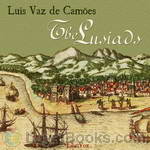 The Lusiads
The Lusiads
The Lusiads (Os Lusíadas) is a Portuguese epic poem, written in the 16th century by Luis Vaz de Camões. The poem tells the tale of the Portuguese discoveries in the 15th and 16th centuries, specially the voyage to India by Vasco da Gama. Modelled after the classic epic tradition, Camões' Lusiads are considered not only the first literary text in Modern Portuguese, but also a national epic of the same level as Vergil's Aeneid. In the 19th century, Sir Richard Francis Burton translated Camões' Lusiads, in what he considered "the most pleasing literary labour of his life". | |
By: Luise Mühlbach (1814-1873) | |
|---|---|
 Marie Antoinette and Her Son
Marie Antoinette and Her Son
Marie Antoinette lives a happy life in a glittering court as Queen of France, but that soon changes as the revolution begins. Her son is Louis Charles, and his whole life changes with the death of his parents. But, that life is not what the people of France would expect. | |
By: Marcus Clarke | |
|---|---|
 For the Term of His Natural Life
For the Term of His Natural Life
For the Term of his Natural Life, written by Marcus Clarke, was published in the Australian Journal between 1870 and 1872 (as His Natural Life), appearing as a novel in 1874. It is the best known novelisation of life as a convict in early Australian history. Described as a “ripping yarn”, and at times relying on seemingly implausible coincidences, the story follows the fortunes of Rufus Dawes, a young man transported for a murder which he did not commit. The harsh and inhumane treatment meted out to the convicts, some of whom were transported for relatively minor crimes, is clearly conveyed... | |
By: Margaret Horton Potter (1881-1911) | |
|---|---|
 Castle of Twilight
Castle of Twilight
"Wistfully I deliver up to you my simple story, knowing that the first suggestion of “historical novel” will bring before you an image of dreary woodenness and unceasing carnage. Yet if you will have the graciousness but to unlock my castle door you will find within only two or three quiet folk who will distress you with no battles nor strange oaths. Even in the days of rival Princes and never-ending wars there dwelt still a few who took no part in the moil of life, but lived with gentle pleasures and unvoiced sorrows, somewhat as you and I; wherefore, I pray you, cross the moat... | |
By: Margaret S. Comrie (1851-?) | |
|---|---|
 Key to the Riddle
Key to the Riddle
Young Azerole Montoux and her brother Leon find themselves separated from their family by the religious persecutions of 1686. Threatened by the authorities and forced to depend on strangers, they must decide whether they can trust God to make sense out of the riddle of their lives. | |
By: Margaret Wilson (1882-1973) | |
|---|---|
 Able McLaughlins
Able McLaughlins
The Able McLaughlins won the Pulitzer Prize for a novel in 1924 in Margaret Wilson's debut work. Aptly described as "Little House on the Prairie - but for adults" the novel follows a group of Scottish families who pioneer the Iowa prairie in the 1860’s. The main storyline concerns Wully, the eldest McLaughlin son, who returns home from the Civil War to find that his sweetheart, Chirstie, has experienced an unspeakable tragedy that will profoundly affect the couple's lives. Their story is one of shame and honor, secrets and guilt, fear and loathing, revenge and forgiveness... | |
By: Maria Edgeworth (1768-1849) | |
|---|---|
 Castle Rackrent
Castle Rackrent
| |
By: Marjorie Bowen (1885-1952) | |
|---|---|
 Prince and Heretic
Prince and Heretic
This novel is centered on the Dutch House of Orange, and begins with its prince, William. It is set in the time of the Holy Inquisition, when tensions between the Catholic and Protestant churches dominated. | |
By: Mark Twain (1835-1910) | |
|---|---|
 The Prince and the Pauper
The Prince and the Pauper
A poor young boy from the slums of London watches a royal procession pass, with the youthful Prince of Wales riding at its head. He ventures too close and is caught and beaten by the Prince's guards. However, the young royal stops them and invites the vagrant to the palace. Here the two boys sup alone and are stunned to discover that they bear a startling resemblance to each other. The Prince is Edward, long awaited heir of the monarch, Henry VIII, while the vagrant is Tom Canty, the son of a thief and a beggar... | |
 Personal Recollections of Joan of Arc, Volumes 1 & 2
Personal Recollections of Joan of Arc, Volumes 1 & 2
Mark Twain’s work on Joan of Arc is titled in full “Personal Recollections of Joan of Arc, by the Sieur Louis de Conte.” De Conte is identified as Joan’s page and secretary. For those who’ve always wanted to “get behind” the Joan of Arc story and to better understand just what happened, Twain’s narrative makes the story personal and very accessible. The work is fictionally presented as a translation from the manuscript by Jean Francois Alden, or, in the words of the published book, “Freely Translated out of the Ancient French into Modern English from the Original Unpublished Manuscript in the National Archives of France... | |
 Goldsmith's Friend Abroad Again
Goldsmith's Friend Abroad Again
This satire on the U.S.A.'s myth of being the "Home of the Oppressed, where all men are free and equal", is unrelenting in its pursuit of justice through exposure. It draws a scathingly shameful portrait of how Chinese immigrants were treated in 19th century San Francisco. (Introduction by John Greenman) | |
 The American Claimant
The American Claimant
The American Claimant is an 1892 novel by American humorist and writer Mark Twain. The story focuses on the class differences and expectations of monarchic, hierarchical Britain and the upstart, "all men are created equal" America. Twain wrote the novel with the help of phonographic dictation, the first author (according to Twain himself) to do so. This was also (according to Twain) an attempt to write a book without mention of the weather, the first of its kind in fictitious literature. Indeed, all the weather is contained in an appendix, at the back of the book, which the reader is encouraged to turn to from time to time. | |
 How To Tell A Story, and Other Essays (Version 2)
How To Tell A Story, and Other Essays (Version 2)
The complete collection of works using this title. Other versions, including the Project Gutenberg version, have been radically shortened. Mark Twain published several collections of his short stories and essays. This collection, like the others, dramatically demonstrates the eclectic nature of his work and the depth of his humanistic thinking. Each essay stands alone. Listeners will find many instances where modern times come to mind. | |
 Death Disk
Death Disk
Mark Twain's "Death Disk" was inspired by the historical account of the execution of Colonel John Poyer of Pembroke, Wales on April 21, 1649. A small child was given the responsibility of selecting which of three rebel leaders of a civil uprising would receive a death penalty. The unfortunate fate was given to Poyer who was shot in front of a large crowd at Covent Garden. In 1883 Twain read about the child's role in the execution in a copy of Carlyle's Letters and Speeches of Oliver Cromwell, . In his personal notebook, Twain's imagination led him to remark, "By dramatic accident, it could have been his own child" ... | |
By: Marshall Saunders (1861-1947) | |
|---|---|
 'Tilda Jane
'Tilda Jane
When spunky 'Tilda Jane isn't allowed to keep her beloved dog with her at the orphanage, she decides to set out on her own in search of a home where the inseparable pair will be accepted. Throughout her weary travels she encounters many people, both rich and poor, kind and cantankerous -- but will she ever find family? Set in the Canadian wilderness and coast of Maine, 'Tilda Jane is a story of true grit, forgiveness, and unlikely friendship. | |